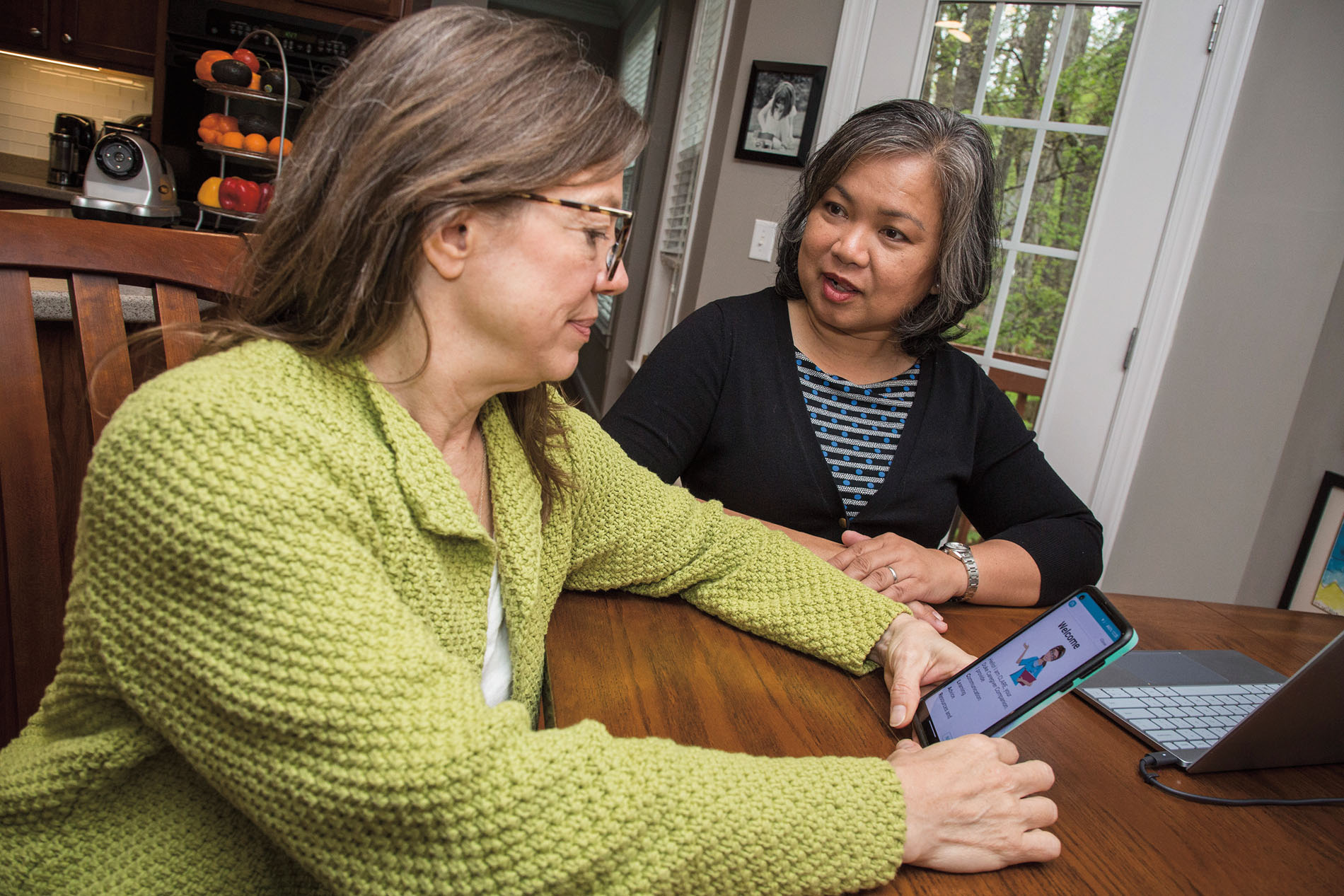More of us than ever before are caring for older family members, including after they leave the hospital and begin to recover at home.
Nearly a quarter of adults ages 45 to 64 are caregivers to a family member or friend, the Centers for Disease Control and Prevention estimates, making it a public health concern and an issue increasingly integrated into the training of nurses and health care practitioners.
Cristina Cu Hendrix, a professor of nursing at Duke, is researching new ideas for training these caregivers and helped to design an app that offers education and information on things like understanding discharge instructions, assessing symptoms and caregiver self-care. The app offers resources to fill in the gaps for those whose loved ones are now at home but still need looking after. And it provides a bridge before patients are seen by their primary care physicians after hospitalization.
The app was first studied with caregivers of COVID patients. It was developed so information could be shared quickly but not face-to-face. Hendrix said her research found that caregivers wouldn’t check email regularly, but they responded quickly to texts, making the ease of an app a natural fit for sharing guidance and best practices. Help or answers were literally at their fingertips.

Hendrix, who leads Duke’s Elder Family/Caregiver Training Center, says the focus on the caregiving aspect of nursing is personal. She was born in the Philippines where she earned her bachelor’s degree in nursing before joining Duke more than 20 years ago. In her home country, family caregiving is a cultural tradition, and it is considered a personal responsibility for loved ones to step in and help with care.
“I grew up in a country that is poor. And as a result, we rely on our families and friends if we need assistance,” she said. “In health care [there] it’s mostly family and friends at home who provide that type of assistance to patients. We don’t have home health and medical insurance as much as in the U.S.”
In the U.S., as more families are taking on a deeper caretaking role, Hendrix will study the feasibility of the app’s use with caregivers of older patients whose diagnoses fall into the scope of Medicare – heart failure, COPD, myocardial infarction, coronary artery bypass grafts and joint replacement.
“I think the weakness on how we provide support and training to caregivers is we use a one-size-fits-all approach and also overwhelm them with a lot of information that in the end they really don’t know how to use,” she observes. “What we are doing in the app is trying to prioritize what information to give at a certain time.”
Hendrix says caregiving continues to be more effectively integrated into the curriculum of nursing programs and she has created course work to help future nurses understand the crucial roles that family and friends can play in someone’s health journey.
Hendrix, who is also a nurse investigator/researcher at the Durham VA Health Sciences System, worked as an ICU nurse before she became a nurse practitioner. And that experience gave her a window on the difficulties family members face when they step up to offer care while also juggling their own responsibilities of family and looking after themselves – an often-overwhelming experience.
She notes that today in the U.S. health care system, many patients are getting discharged from the hospital much more quickly. “What that means is that many caregivers will be charged with giving care to people who are still in active recovery at home.”
But, she says, that is exactly where she thinks patients can best heal.
“I’ve always been passionate and convinced that the best caregivers for patients are families and friends. I know we have nurses, but the emotional connection of family cannot be replicated by professionals.”
